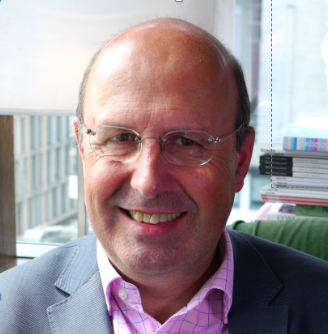You can sign up to our LinkedIn newsletter here.
The way that you engage your first client is going to set the template for success in the future.
Getting Started
Often, when I’m working with portfolio executives, they are very keen to be fee earning at reasonable level as quickly as possible. Let’s assume that you have succeeded in engaging the client using my recommended Capability Maturity diagnostic. Now you are proposing how you’re going to work with them going forward. My strong recommendation is that for the first three months, minimum, you engage with them a day a week. This allows you to create early impact, engage all the stakeholders and to cement and strengthen your position.
If this is your first client, then a day a week still gives you plenty of availability to go and find the next client, do a diagnostic for them and to engage them as a long term client. It is tempting with the first client to spend substantially more than a day a week. There’s always lots to do and you could very easily spend two or three days a week to make even more impact. But this has real risks for you as a portfolio executive.
You have three challenges if you go down this route.
- You start to feel like a part-time interim. The expectation can be that you then sustain that level of input. But after the initial work, you’re likely to be unable to deliver high value at this pace. You will end up doing tasks which are better done by somebody paid less money, who has fewer skills and less knowledge and experience.
- You set the expectation that you are going to be available with this level of contact and it’s much more difficult to wean the client away from this dependency.
- Your client’s organisation is unable to respond to the pace of change. You’re typically working for smaller organisations and smaller organisations have much less capacity for change. You will start to be perceived as an external consultant. You investigate all of the changes required, produce lots of detailed reports about things that should be done, develop road maps and plans, but find the organisation has limited capacity to execute. Within two or three months, you have delivered plenty of wonderful shelfware but your client is not seeing much traction. They become disappointed and it’s much easier for them to let you go. You have also incurred a lot of cost: if you are achieving day rates of £1000 a day and you are doing 12 days a month, you start to look very expensive on an annual basis.
For all of these reasons, I strongly recommend that you limit your initial engagement to a day a week.
What do you do after those three months are over?
Again, there’s three crucial things that you need to do.
- Plan the transition to reduced days and reset expectations so that your ongoing commitment reduces. This may involve them hiring a junior person to fill out the team. Your diagnostic would have identified some of these needs and during first three months you should have started to recruit or re-position the people who are going build up your team.
- Bag the benefits. You have been spending £4,000 – £8,000 a month of your client’s money. You need to be very clear as to what benefits you have delivered, the improvements you have achieved and how these have increased revenue, reduced costs and allowed them to better manage risk. Clients will forget that you are making a difference. They will forget what it was like before you came. You need to constantly reinforce the message of your value and regularly talk about the next things that need to be done. You want to reinforce commitment to a long-term journey and not just a ‘find-a-problem’, ‘fix-a-problem’ consulting relationship.
- Strengthen your role as a trusted advisor to the CEO. Don’t just talk to the CEO about your immediate responsibilities, create the opportunity to ask open questions that allow the CEO to treat you as sounding board on other matters. Make sure that your relationships with other stakeholders are strengthened through your interaction and make sure that you are establishing yourself as a vital part of the team. Never lose the independence that you have to offer a CEO as an outsider.
Summary
You have won your first client. You have successfully implemented your first 90 day action plan. You were operating at four days a month and now you are transitioning to two or three days a month.
Your focus is enabling others to do more of the things that need to be done. Your mandate is to make sure the right things are done and done right. Your approach is increasingly to coach and support the junior team that can deliver the function you are responsible for. Your goal is that, on an ongoing basis, the capability of this function is fit for purpose as the organisation develops.
You probably want to ensure that you are on-site at least once a month. You will want to have a confidential conversation with the CEO at least once a month. You need to be demonstrating value month in, month out. You will do this through the reports you provide at the executive team meeting, the plans you hold yourself accountable to and the way that you match the needs of the annual budget, in relation to revenue, cost and the better management of risk.
If you do all of those things consistently and well, you can expect to have a relationship with your client that can extend to four to six years and ultimately transition to a board advisory or non-executive role.

Charles McLachlan is the founder of FuturePerfect and on a mission to transform the future of work and business. The Portfolio Executive programme is a new initiative to help executives build a sustainable and impactful second-half-career. Creating an alternative future takes imagination, design, organisation and many other thinking skills. Charles is happy to lend them to you.
